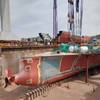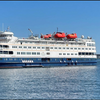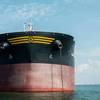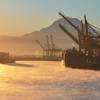New Container Port Opens in Costa Rica
The inauguration of APM Terminals Moín, Costa Rica yesterday will enable products to be shipped on transatlantic routes to European and Asian markets without transshipment.
The new terminal will also move Costa Rica to number one for connectivity, out of 139 countries ranked by the World Economic Forum, said a press release from the international container terminal operating company headquartered in The Hague, Netherlands.
"At APM Terminals we partner with governments to become the best port operator in the world and Moín is a great example. Without any doubt, we are inaugurating today a new era in international and intra-regional trade in Central America,” said Morten H. Engelstoft, CEO of APM Terminals.
The project represents a total investment of $1 billion and is built on a 40-hectare artificial island. The terminal has a 650-meter long pier and a container yard with the capacity to hold 26,000 TEUs (Twenty-foot Equivalent Units), including power connection capacity for 3,800 refrigerated containers. Refrigeration is essential as Costa Rica is currently the world’s largest exporter of pineapples and third largest exporter of bananas.
“One of the goals of the Costa Rican Government is the job creation with a territoriality approach and, with this project that we are inaugurating today, the conditions of competitiveness and economic reactivation are being created for the province of Limón and also for the entire country, ” said Carlos Alvarado Quesada, President of the Republic of Costa Rica.
The Terminal has the most modern scanner in Latin America for cargo inspections. The six gantry cranes and the 29-yard cranes represent a $110 million investment and will allow the terminal to continuously perform an average of 180 movements per hour for loading and unloading.
These efficiency standards will significantly reduce vessel service times from 40 hours (average time in other docks) to just 15 hours.
APM Terminals trained a key team of operators and technicians at some of its other terminals with high container traffic in Egypt, Brazil and Morocco.















